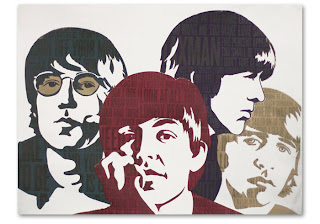 |
| Abbey Road Studio and J-rocks |
J-Rocks is a music group to take the origin of a flow of Japanese pop / rock, and established since 2003. J-Rocks personel is Iman (vocal, guitar), Sony (guitar), Wima (bass) and Anton (drums).
In 2005, they released an album of Topeng SAHABAT under the label Aquarius Musikindo. They also fill the two songs in the OST album DEALOVA namely Into the Silent and Serba Salah.
Two years later, J-Rocks issued second album, SPIRIT, which displays a variety of beat and the flow of music such as Rock 'n Roll (Juwita Heart), Waltz / Victorian (Tersesal), Blues, Classic. On this second album, J-Rocks recording together with Prisa.
Why write this post? What is the relationship with
Abbey Road Studio?
J-Rocks, just go back to Jakarta, after the golden opportunity for the recording at Abbey Road Studios, London, UK. When recording, the Ambassador of Indonesia to the UK, Yuri Thamrin, come visit and meet the personnel J-Rocks.
"Proud we also recorded the time, Mr. Dubes come. I know he has been looking and reading all about the J-Rocks," Anton said the drum, when found in Plaza Senayan, Jakarta, Thursday (23/10).
Yuri previously served spokesman Ministry of Foreign Affairs, had also expressed pride and gratitude on the performance of J-Rocks.
"Time is the proud because he is easier job as ambassador of Indonesia. Because of his name and maintain the J-Rocks come to the UK for the recording, one thing is extraordinary," said Anton again.
The four songs in the middle-mastering in Australia is planned to be made in the form of a mini-album, but the owner of the album Topeng SAHABAT and SPIRIT is not yet know precisely when the album was released, except the single Falling in Love will be coming in November.
The four songs in the middle-mastering in Australia is planned to be made in the form of a mini-album, but the owner of the album and Topeng SAHABAT SPIRIT is not yet know precisely when the album was released, except the single Falling in Love will be coming in November.
During 11 days in the UK, J-Rocks fill the stage at the opportunity KBRI, visiting Liverpool, Beatles Museum, watch the football rivalry between England vs Kazakstan.
Abbey Road Studio is a historic recording studio, built in 1931, is very sticky with legendary group The Beatles, because most of the album and single they recorded in studio style 'Gregorian' is for 8 years (1962-1970). Abbey Road and even elected to the title of the album The Beatles, which was launched in 1969.
Up to now, Abbey Road Studios was a successful print board with dozens of artists over the world such as Cliff Richard, Radiohead, Pink Floyd, Oasis, Green Day and U2.







